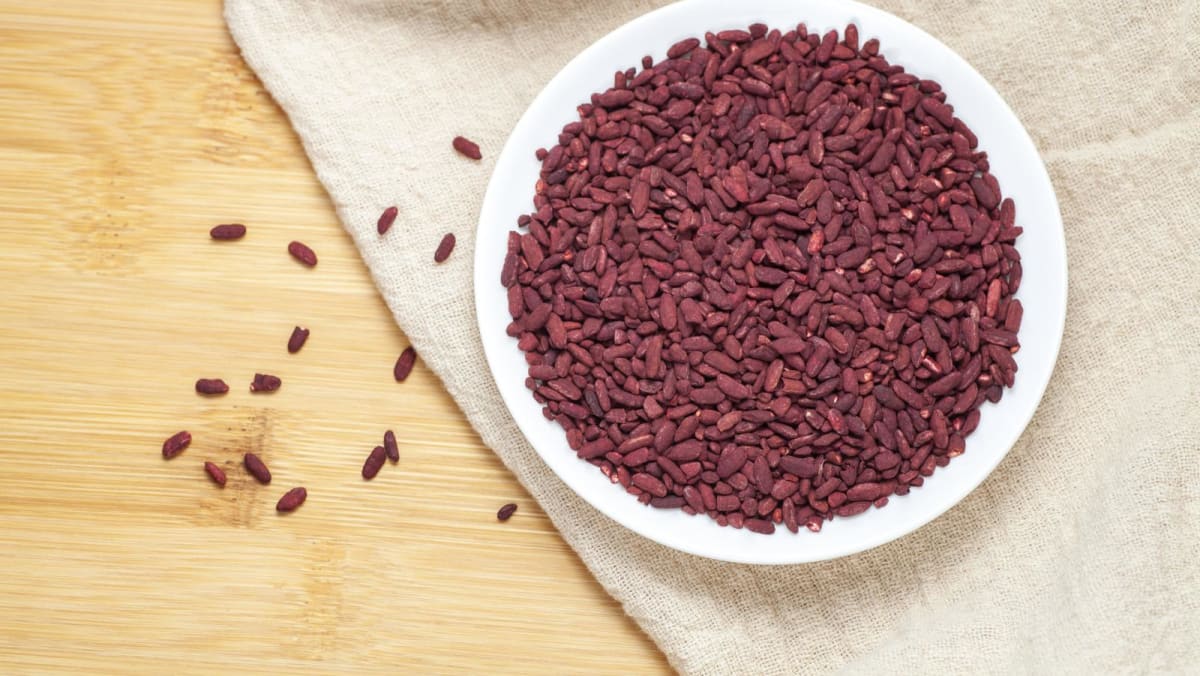CNA Explains: What is red yeast rice, its health benefits and safety concerns?

What are the purported benefits of red yeast rice?
Health supplements containing red yeast rice are often marketed to help with lowering cholesterol.
This is because red yeast rice contains a compound called monacolin K, which is chemically identical to lovastatin, said Professor Eric Chan, a pharmaceutical scientist at the National University of Singapore’s (NUS) Department of Pharmacy and Pharmaceutical Sciences.
Lovastatin belongs to the class of medications called statins. Statins lower the amount of “bad cholesterol” and fat in the blood as well as increase the amount of “good cholesterol”.
According to Singapore’s HealthHub website, high “bad cholesterol” levels can cause blood vessels to clog up and lead to chest pain, heart attack or stroke.
Past research has shown that the levels of monacolin K can vary across red yeast products, said Prof Chan, but such products rarely declare the levels of the compound that they contain.
As a result, it is possible that the effectiveness and side effects of such products might be “unpredictable”, he added.
What are some of the concerns surrounding red yeast rice?
According to a 2018 study by the European Food Safety Authority, there have been reports of people in Europe and the United States experiencing side effects after consuming red yeast rice. These included muscle pain, liver injury and gastrointestinal disorders.
While monacolin K in red yeast rice helps to lower cholesterol, it also causes side effects that are similar to those from statin medication, explained Prof Chan.
Statins may cause muscle injury, with symptoms of increasing severity, such as weakness, soreness and cramps, he said. In some cases, it can lead to kidney damage.
“This is why statins are ‘by prescription only’ with recommendations to schedule safety tests on a regular basis,” he said.
However, such side effects are “uncommon” for patients taking statin medication, said Dr Yeo Khung Keong, a senior consultant cardiologist. About 3 per cent to 5 per cent of his patients get muscle aches and pain, he added.
Unlike statin medication, over-the-counter health supplements such as those containing red yeast rice undergo “less rigorous” regulatory controls, said Dr Yeo.
Medication is subject to a degree of scrutiny that ensures its active ingredients are replicated in every pill.
“It must be clear what active ingredient the drug contains. And whether this active ingredient is in a particular dose that is known can be replicated,” Dr Yeo explained. “Meaning it can be reliably known that if you take a pill that says 20mg of statin, it is always – within a certain margin of error – 20mg of statin.”
There are some guidelines for red yeast rice products.
According to HSA’s regulatory guidance, supplements with red yeast rice are required to contain less than 1 per cent of lovastatin.
HSA also prohibits the addition of ingredients such as steroids in health supplements and sets strict limits on toxic heavy metals.
Dealers have an obligation to ensure that their products are not harmful or unsafe, and that they conform with HSA’s guidelines, said the authority.
What went wrong in the case of the three Kobayashi products?
Dr Yeo pointed out that in the case of Kobayashi Pharmaceutical’s recalled products, the side effects might have been caused by a contaminant, rather than the active ingredient.
The Japanese drugmaker has said it found what appeared to be potentially toxic puberulic acid at its Osaka factory. It could have been produced by the blue mould penicillium in the red yeast rice produced between last April and October at the factory.
Under certain circumstances in the fermentation process, the mould used in the production of red yeast rice can also produce citrinin, a toxin associated with various adverse health effects like liver damage and kidney failure, said nutritionist Ms Jeffy.
“As much as possible, manufacturers would attempt to control the citrinin levels in their products but, nevertheless, (they) cannot control a lot of environmental factors which could result in the inconsistent level of these toxins,” she added.
Source: CNA















